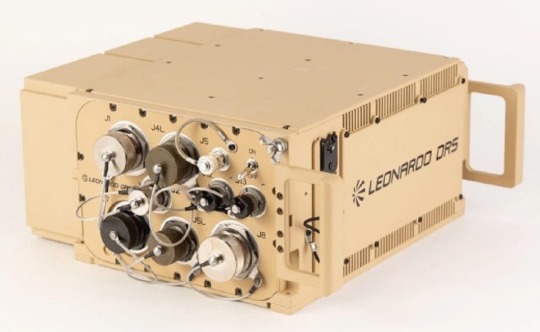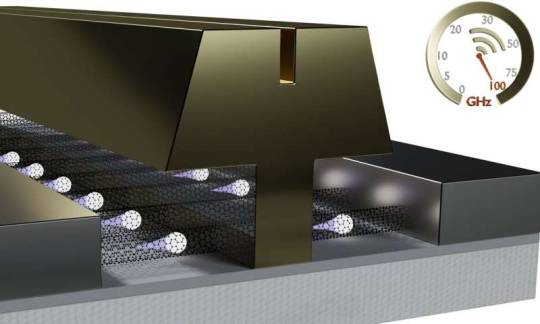#CMOSS
Explore tagged Tumblr posts
Text
CMOSS | SOSA | Elma Electronic
Used by the US Army MORA is the U.S. Army DEVCOM C5ISR Center’s architecture for open radio frequency interfaces for ground vehicles. Its purpose is to offer new capabilities, including reducing size, weight, and power (SWaP) and improving interoperability functions within the platform. This 3U OpenVPX development platform provides a 6-slot backplane that supports plug-in card profiles aligned with the SOSA Standard. It supports the latest profiles used to develop systems that follow the hardware requirements of both SOSA and CMOSS
#SOSAAligned#SensorOpenSystemsArchitecture#OpenStandards#ModularOpenSystems#MOSA#CMOSS#OpenVPX#VITA65#InteroperableSystems#EmbeddedDefense#RuggedMissionSystems#C5ISR#MilitaryElectronics#TacticalComputing#DefenseInnovation#ElmaSOSA#SOSACompliance#SOSAPlatform#MissionCritical#ElmaElectronic
0 notes
Text
UM. WELL... NO QUESTIONS. GOODBYE
Anytime i see some bald character with fire hair i think omg like khmoii and li thality
28 notes
·
View notes
Text
CMoss Beauty Skincare has fab products with collagen of the sea
These days so many companies are choosing to add unique ingredients into their skincare products. cMoss Beauty proclaims their nutrient-rich skincare as “collagen of the sea” skincare. It’s the unique ingredient in all of the products of cMoss Clean Beauty. I tested out three products from this “Collagen of the Sea” skincare brand. So what is the cMOSS “Collagen of the Sea?” It’s a proprietary…

View On WordPress
#@beauty#ocean#amethyst#beautiful#beautifulman#beautifulwoman#chondruscrispus#cleanbeauty#cleanskin#crystals#florida#glycolic#health#irishseamoss#products#rangeme#seamoss#seamossskincare#sephora#ulta#youngliving
1 note
·
View note
Text
Leonardo DRS Introduces New Mounted Form Factor Mission System to Address US Army’s CMOSS Modernisation Initiative
Leonardo DRS, Inc. announced today its newest combat computing product as its latest addition to the company’s proven tactical computing portfolio of products used across U.S. and allied militaries. This new offering is fully compliant with the U.S. Army’s C4ISR/Electronic Warfare Modular Open Suite of Standards (CMOSS). This modular open systems architecture (MOSA) platform will enable flexibility and advanced capabilities intended to converge select Army warfighting capabilities – such as mission command, movement and maneuver and fires. The company’s new platform is well positioned to address the U.S. Army’s requirements under the CMOSS Mounted Form factor (CMFF) Program. This new DRS-designed CMFF system is an innovative, next-generation combat vehicle computing hub that is a ruggedized, lightweight, open architecture hardware system designed to deliver state-of-the-art capability to future Army combat computer networking needs. It enables users to insert plug-and-play networked 3U-VPX capability cards including assured positioning navigation and timing (APNT), mission command applications, and multi-band software defined radios. #military #defense #defence #militaryleak
Leonardo DRS, Inc. announced today its newest combat computing product as its latest addition to the company’s proven tactical computing portfolio of products used across U.S. and allied militaries. This new offering is fully compliant with the U.S. Army’s C4ISR/Electronic Warfare Modular Open Suite of Standards (CMOSS). This modular open systems architecture (MOSA) platform will enable…

View On WordPress
0 notes
Photo

#GoldeWaterAlert from @goldewater The body uses vitamin C in many different ways. Vitamin C is needed by the body to form collagen. According to the NIH, the body also uses vitamin C to make skin, tendons, ligaments and blood vessels. It also uses this vitamin to repair and maintain cartilage, bones and teeth, to heal wounds and to form scar tissue. . . . Vitamin C may also prevent cancer by blocking the damage made by free radicals. “Vitamin C is a vital antioxidant that helps protect cells from damage caused by free radicals that we are exposed to in the environment such as air pollution, cigarette smoke and ultraviolet light from the sun,” said Dr. Sherry Ross, OB/GYN and Women’s Health Expert at Providence Saint John’s Health Center in Santa Monica, California. . . . . . . #funfact #vitaminc #goldewatercorp #onthegold #immunity #health #seamoss #greentea - #Healthalert #GoldeWater #H20 #gold #cmoss #immunesupport #vaccines #1000network #networkdistribution #vaccine #wellness #supplements #vitamins #blackfamily #community #MyBlackReceipt #BusinessAlert #art #kmba #kissmyblackart (at Phenomenal Radio) https://www.instagram.com/p/CBmbHHkjUVB/?igshid=wlnqw8dwl4ue
#goldewateralert#funfact#vitaminc#goldewatercorp#onthegold#immunity#health#seamoss#greentea#healthalert#goldewater#h20#gold#cmoss#immunesupport#vaccines#1000network#networkdistribution#vaccine#wellness#supplements#vitamins#blackfamily#community#myblackreceipt#businessalert#art#kmba#kissmyblackart
0 notes
Photo

Highly performing and wafer-scalable aligned carbon nanotube transistors
As we enter the wireless world of 5G, communications in the millimeter-wave band (i.e., from 30 to 300 GHz) will become increasingly important, particularly for high-speed wireless data-transfer applications. The trouble is that at these small wavelengths, the on-circuit signal strength degrades rapidly, thus requiring the circuit to be highly integrated into the smallest possible footprint. To best implement this, the high-frequency transistor technology needs to be compatible with the workhorse technology of digital electronics: complementary metal-oxide-semiconductors (CMOSs).
Recent studies have suggested that transistors made of aligned carbon nanotubes could lead to better performance in wireless devices than commonly used III-V semiconductors. This is primarily due to their highly linear signal amplification and their better compatibility with CMOS circuits.
With this in mind, researchers at Carbonics Inc., a semiconductor electronics company based in Los Angeles, have recently developed a new type of transistor made of aligned carbon nanotubes. This new transistor, presented in a paper published in Nature Electronics , operates at gigahertz frequencies and is easier to integrate with CMOS technology than most existing transistors.
Read more.
36 notes
·
View notes
Text
Military Embedded Systems Market : Key Players, Applications, Outlook, SWOT Analysis And Forecasts 2022 to 2032
According to research by Future Market Insights, the military embedded systems market is anticipated to grow from US$ 1.6 billion in 2022 to US$ 3.6 billion by 2032, at a CAGR of 8.1%.
From 2022 to 2032, the military embedded systems market is anticipated to grow at a CAGR of 8.1%, from USD 1.6 billion in 2022 to USD 3.6 billion in 2032.
The high cost of military embedded systems, on the other hand, is restricting the expansion of the military embedded systems market. The sales of military embedded systems are predicted to grow as cloud computing, network-centric warfare systems, and wireless technologies open up new doors in the sector.
The demand for military embedded systems is rising as multi-core technology enables designers to adapt to future hardware requirements while staying under budget limits. Due to the widespread usage of multi-core technology in electronic warfare systems, the sales of military embedded systems are predicted to grow.
Request for Sample @ https://www.futuremarketinsights.com/reports/sample/rep-gb-14588
KEY TAKEAWAYS:
From 2022 to 2032, the blade server segment is expected to lead the military embedded systems market in terms of server architecture. Due to the increasing deployment of modern blade servers, this sector is projected to lead the military embedded systems market.
According to the platform, the land segment is predicted to lead the industry with a CAGR of 7.8% during the forecast period.
With a CAGR of 7.8%, the intelligence, surveillance, and reconnaissance (ISR) segment are predicted to lead the military embedded systems market in terms of application.
The U.S. is predicted to lead the military embedded systems market with a CAGR of 7.6% during the forecast period. Increased investments in defense equipment and fighting capabilities, as well as the installation of network-centric infrastructure, are likely to propel market growth in the U.S.
The United States and Canada are the two largest countries in this region, with the United States leading the military embedded systems market in North America. The United States is a technologically advanced country with enormous potential for military electronics investment. North America is the primary distribution center for technologically advanced applications. The United States is a technologically advanced country with large investment potential in embedded system technologies. Market expansion in this region was aided by increased investments in next-generation communication technology and integrated warfare capabilities.
COMPETITIVE LANDSCAPE:
Some of the key players in the military embedded systems market profiled in the study are Mercury Systems, Inc., Curtiss-Wright Corporation, Advantech Co., Ltd., SMART Embedded Computing, and Kontron AG.
Recent Developments
Abaco Systems introduced its new 3U CompactPCI Rugged Single Board Computer in April 2020, which is designed for a wide range of demanding applications in defense, aerospace, industrial, and commercial areas where rugged reliability in hostile environments is critical.
Kontron AG added a new VX305H-40G 3U OpenVPX single board computer module to its modular open systems architecture product line in February 2020.
Kontron AG inked a distribution deal with Mouser Electronics in February 2020 for its computer-on-modules (COMs), which include COM Express modules based on Intel Atom E3900 series, Pentium processor N4200, and Celeron processor N3350 processors.
Elma Electronic (Switzerland) and Curtiss-(U.S.) Wright’s defense solutions division collaborated in January 2019 to improve a 3U OpenVPX convergence development platform for the C4ISR CMOSS.
Mercury Systems, Inc. invested USD 15 million in October 2019 to grow its custom microelectronics business, providing the U.S. Department of Defense with cutting-edge commercial silicon technology (DoD).
Speak to our Research Expert @ https://www.futuremarketinsights.com/ask-question/rep-gb-14588
Key Segments
By Component
Hardware
Processor
Memory
Converter
Graphical Processing Unit (GPU)
Others
Software
By Application
Radar
Command & Control
Avionics
Electronic Warfare
Communication & Navigation
Weapon Fire Control System
Others
By Platform
Land
Marine
Space
Airborne
By Technology
Mist Computing
Fog Computing
Edge Computing
By Services
Design, test & certification
Deployment
Renewal
Seamless life cycle support
Full Report @ https://www.futuremarketinsights.com/reports/military-embedded-systems-market
0 notes
Text
Science and Chemistry Classes
Silicon FinFETs hosting hole spin qubits at temperatures over 4 Kelvin
The idea of creating a spin-based quantum computer using quantum dots was first introduced by Daniel Loss and David Di Vincenzo in 1998. Since then, countless engineers and physicists worldwide have been trying to realize their vision using existing and newly developed hardware components.
So far, silicon has proved to be among the most promising materials for creating spin-based quantum computers, as most complementary metal oxide semiconductors (CMOSs) in use today are made of silicon. Moreover, silicon can be designed to be free of nuclear spins, which are known to degrade the coherence of spin qubits in quantum computers.
Researchers at University of Basel and IBM Research-Zurich have recently explored the possibility of hosting spin qubits in silicon-based FinFETs, a class of transistors first introduced by researchers at University of California- Berkeley. Their results, published in Nature Electronics, were very promising, as they suggest that FinFETs could help to improve the scalability of quantum technologies.
"Billions of FinFETs are used in today's computer chips," Andreas Kuhlmann and Dominik Zumbühl, two of the researchers who carried out the study, told TechXplore. "Achieving scalability (i.e., going from a few tens of qubits to many millions) remains the greatest challenge for quantum computing. So, we thought: why not build a quantum computer with a platform that has successfully mastered this challenge? Furthermore, FinFETs are also excellent hosts for (hole) spin qubits and a very handy property of hole spin qubits is their spin-orbit interaction."
The spin-orbit interaction is an important property of hole spin qubits that can be very advantageous, as it allows researchers to manipulate spin states by applying an oscillating electrical signal to them. Physics theory predicts that holes in silicon FinFETs will have an unusually large spin-orbit interaction that can be electrically modulated.
In their experiments, Kuhlmann, Zumbühl and their colleagues tested this prediction using a standard FinFET device to host small, fast and coherent spin qubits that are resistant to high temperatures. Ultimately, they found that the silicon FinFET could host the spin qubits operating at temperatures above 4 Kelvin.
"Our devices work in a similar way to a classical transistor, where the gate electrode controls the current flow from source to drain," Kuhlmann and Zumbühl explained. "Here, we use the gates to trap single hole spins. Once the spins are localized (inside what we call a quantum dot), microwave signals can be applied to manipulate the spin state. The smaller these quantum dots are the more robust they are against temperature."
The FinFET realized by the researchers resemble those that are currently being manufactured worldwide. This means that they could be easy to integrate with existing components and to scale up (i.e., increasing the number of qubits inside them).
Other existing quantum computing platforms, such as those hosting superconducting qubits, typically need to operate at millikelvin (mK) temperatures. The qubits hosted in the platform developed by the researchers, on the other hand, can be operated at temperatures above 4K.
"A cryostat operating at 4K is technically much less demanding than one operating at mK temperatures," Kuhlmann and Zumbühl said. "Furthermore, at 4K the available cooling power is orders of magnitudes larger than at mK temperatures. This means that in future we could integrate the classical control electronics (required for qubit control) on-chip with the qubits. This is important when scaling up the qubit count, since the number of control lines going from room temperature to mK inside a fridge is limited, and the more qubits the more control lines are needed."
In the future, the recent study carried out by Kuhlmann, Zumbühl and their colleagues could help to accelerate the development of quantum computing technology and improve its scalability. In the meantime, the researchers plan to optimize the performance of the qubits inside their device further.
"We want to make the qubits more coherent and at the same time reduce the gate times," Kuhlmann and Zumbühl said. "In addition, we would like to scale up the number of qubits inside our transistor."
0 notes
Photo

Leuwi Cihanjuang pagerageung #tasikmalaya #tasik #kabupatentasik #kotatasik #kabupatentasikmalaya #kotatasikmalaya #nationalgeographicphoto #shotonpoco #shotonpocox3 #shotonpoco_id #leuwi #leuwicihanjuang #mountainphotography #leuwicihanjuangpagerageung #enjoytasik #tasiksociety #tasikhits #tasikmalayahitz #tasikkeren #visittasik #like #likeforlikes #likeforfollow #like4likes #tasiknet #likesforlike #exploretasikmalaya #explorekabupatentasikmalaya #wisatatasikmalaya #amazingtasikmalaya https://www.instagram.com/p/CMoss-erROl/?igshid=1595ymqeqajdx
#tasikmalaya#tasik#kabupatentasik#kotatasik#kabupatentasikmalaya#kotatasikmalaya#nationalgeographicphoto#shotonpoco#shotonpocox3#shotonpoco_id#leuwi#leuwicihanjuang#mountainphotography#leuwicihanjuangpagerageung#enjoytasik#tasiksociety#tasikhits#tasikmalayahitz#tasikkeren#visittasik#like#likeforlikes#likeforfollow#like4likes#tasiknet#likesforlike#exploretasikmalaya#explorekabupatentasikmalaya#wisatatasikmalaya#amazingtasikmalaya
0 notes
Photo

Ryuk from Death Note Cosplayer: Foxxi Loxxi Cosplay Photographer: CMOSs Photography
3 notes
·
View notes
Text
SOSA Aligned | SOSA Systems
Elma’s SOSA and CMOSS Aligned 12-Slot 3U Development Platform served as the heart of joint efforts by five SOSA Consortium member companies to build and test a fully functioning system aligned to SOSA. These industry partners, that participated in the demo using Elma’s development platforms included Behlman Power, Concurrent Technologies, Crossfield Technology, Curtiss Wright, Interface Concept and Spectranetix (a Pacific Defense company).

#SOSA#SOSAAligned#SOSAStandard#SOSAReady#SOSACompliant#SOSAPlatform#SOSAConsortium#OpenArchitecture#ModularOpenSystems#SOSAIntegration#ElmaSOSA#ElmaOpenVPX#ElmaDefenseSolutions#ElmaMissionSystems#ElmaRuggedPlatforms#ElmaBackplanes#ElmaModularDesign#SOSAByElma#DefenseTechnology#AerospaceComputing#RuggedEmbeddedComputing#TacticalSystems#CMOSS#VPXSystems
0 notes
Text
my favorite thing about cmoss is that my tag for them is filled with eccentric, academic, and unwell posts when they literally look like this

1 note
·
View note
Photo

Jessica More
6 notes
·
View notes
Text
Why Development Chassis are Critical to Implementing Systems Aligned to SOSA
Perhaps surprisingly, one of the many benefits that the SOSA™ Technical Standard offers involve development chassis.
Development chassis are nothing new in embedded computing; they date back to the earliest days of VME, and labs often have development chassis for board design testing and bring up, subsystem testing, or software development and integration. Like deployable systems, development chassis have evolved alongside new industry opens standards.

This is noteworthy because when designing with VPX, a chassis with a single-slot or multi-slot power-and-ground backplane — where all other signals are running straight through to rear transition module (RTM) connectors — can be handy for working with a single board, or multiple boards connected through the RTM boards. However, before the introduction of the SOSA Technical Standard, it was difficult to purchase a commercial off-the-shelf (COTS), multi-slot backplane for a development chassis that supported high-speed slot-to-slot links, due to the varied pin mappings that different vendors chose for their plug-in card products.
The SOSA Technical Standard changed that. By limiting the number of slot profiles and defining specific protocols supported on the various communications planes, companies can now offer COTS backplanes that align to the technical standard and can support similarly SOSA aligned plug-in cards from different suppliers. This means that developers can now purchase off-the-shelf development chassis that permit true multi-board subsystem, or even full system, development.
Open Standards Accelerate System Development
In addition to freeing developers and integrators from the limitations of RTMs and external cabling to link boards in a backplane as well as the need for custom backplanes, SOSA aligned COTS backplanes in development chassis provide several other interesting advantages:
• Subsystem or complete system development: In the past, one usually had to jump from a one- or two-board development platform with limited communications links directly to a target custom backplane, often in the target deployable chassis. Using development platforms based on SOSA, such as Elma’s CompacFrame chassis with SOSA backplanes, one can build up a system component-by-component and validate design elements prior to committing to a target deployable platform design. The fact that development hardware often includes VITA 46.11 chassis management hardware means that even the chassis management itself, which is a function distributed across multiple components in a system, can be brought up and debugged prior to moving to deployable hardware.
• Signal integrity testing: SOSA aligned COTS backplanes in a cost-effective development chassis provide an ideal environment for signal integrity testing of new board designs. By plugging a target-test board into various slots, one can measure the quality of high-speed signals nearer or farther from a board under development using a COTS backplane with known signal characteristics.
• Pre-deployment field testing: It’s now possible to obtain semi-deployable development chassis based on COTS components, such as Elma’s ATR-3600S that uses the same backplanes as lab-grade development chassis. These types of platforms allow for rapid field testing of subsystems or complete prototype systems prior to committing to a production-deployable design.

Development hardware can also be shared between projects, or inherited by subsequent projects, even though they may have different — and sometimes completely dissimilar — board-level content. This saves not only on lab budget, but the time to order and receive all new hardware for a new development project. Should a backplane from a previous project not fit the architectural needs of a new project, there is a good chance that another COTS backplane could, simplifying development platform upgrades to new architectures or slot counts.
Enhanced Design Outcomes in Chassis Development
Sometimes, the unintended consequences of our actions benefit us in ways that we never expected. The advantages of SOSA to deployed platforms, such as ease of integration, enabling future technology insertions and breaking vendor lock, were utmost on the minds of the framers of the technical standard.
However, looking back we can now see a shift in how development platforms are designed and offered by embedded manufacturers as well as how they are used by our integrator customer base. That shift is making it easier and less expensive to perform the development stages of a deployable system project and put solutions into the hands of the warfighter faster than ever before.
#embedded software#embedded#california#backplanes#electronicssolution#electronics#switches#embedded systems#SOSA#SOSAAligned#ModularOpenSystems#VITA65#CMOSS#DefenseElectronics#SOSAIntegration#SOSADevelopment#SOSAReady#SOSACompliance#SOSAPlatform#hardware#fremont
0 notes
